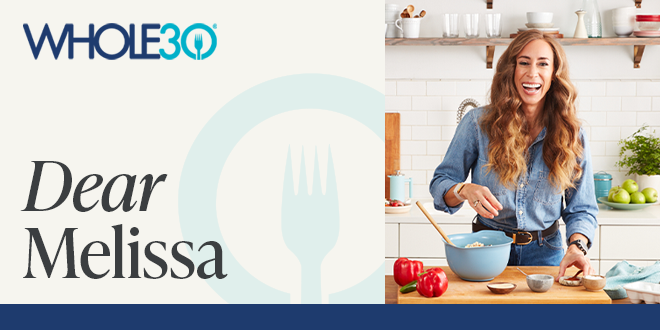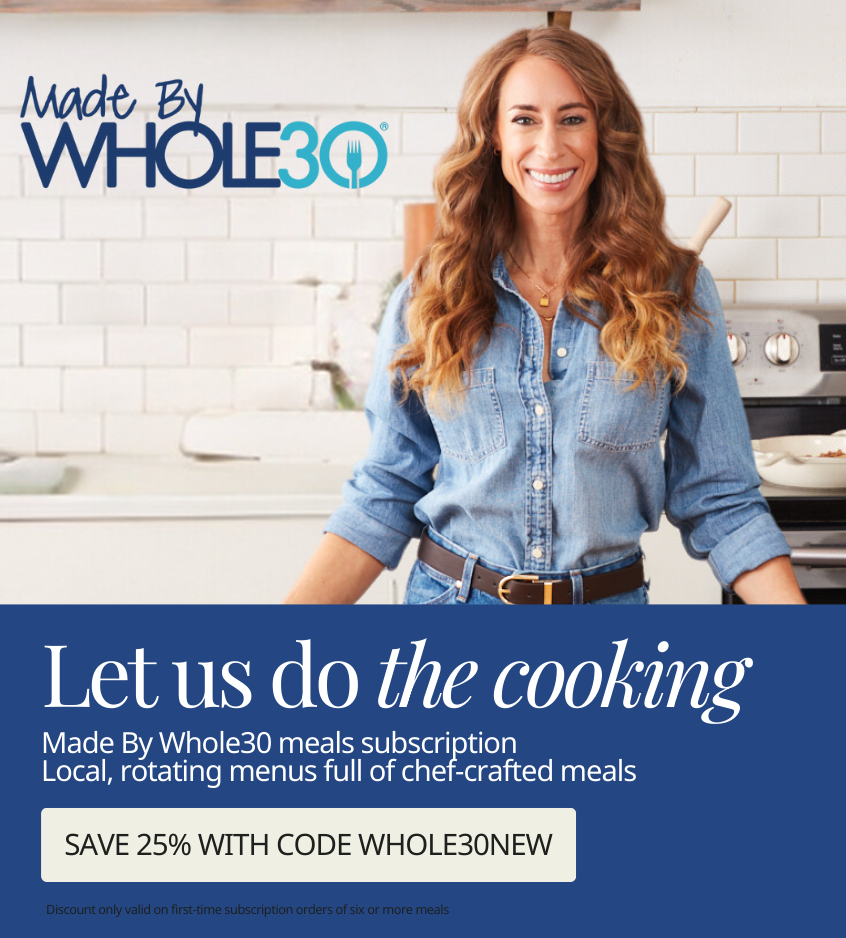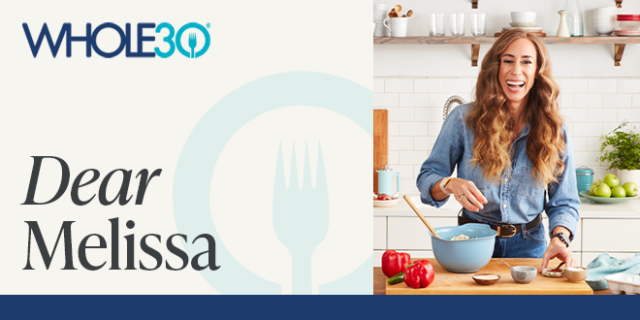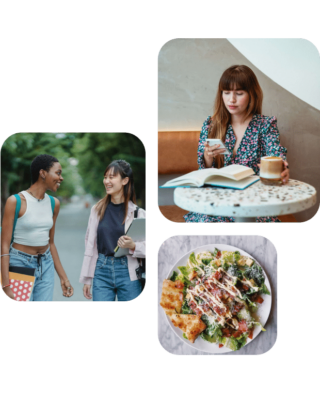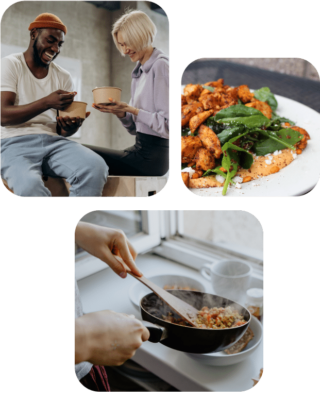Normally, I start this column with a specific “Dear Melissa” reader question. This one, however, is based on a collective of questions I’ve received from Whole30 alumni:
- “Am I saying ‘yes’ too much in my food freedom?”
- “I’m struggling with my food freedom. What am I doing wrong?”
- “I still reach for food when I’m feeling emotional. Help!”
These are great questions! To put your mind at ease, I’m going to answer them and address some common food freedom misconceptions. So let’s bust five food freedom myths together.
What is food freedom?
From The New Whole30: “Food freedom is feeling empowered to choose the foods that feel right for your body, and trusting yourself to make those choices.” Food freedom is the final stop on your Whole30 journey. It’s where you take the information you’ve learned from elimination and reintroduction and use it to create a joyful, sustainable diet for you, according to your definition of health. Learn more.
Myth #1: Food freedom is about getting it “right”
The two questions at the foundation of your food freedom plan are, “Is it worth it?” and “Do I want it?” Over time, you’ll get these questions “right” more often than not. But getting it “wrong” is just as valuable. Every food freedom decision gives you another data point for the future. Thinking, “This will be worth it,” then discovering it isn’t, is valuable intel! You’ll remember this the next time you’re considering this food, and that will make it easier to decline.
Tip: There is no “failure” in food freedom. View every experience as a learning opportunity. Over time, these observations will help you dial in your Food Freedom plan, and make the decisions that serve you best.
Myth #2: Food freedom teaches you how to say “no.”
Weight loss diet culture is all about saying no—but that’s not the Whole30. The program will help you identify the foods that don’t work well for you. But food freedom is just as much about saying “yes” to foods that do work well! During reintroduction, you’ll likely identify many foods that have no negative effects. In fact, some may improve your energy, sleep, mood, or digestion. If you enjoy those foods, please keep eating them in your food freedom!
Tip: Keep your food freedom diet as broad, varied, and joyful as possible. Trust your Whole30 experience. If bread, cheese, oatmeal, or peanut butter are worth it, say yes with confidence!
Myth #3: Your Food Freedom plan should be firm
Your body, health, life circumstances, and priorities are always changing and evolving. So should your Food Freedom plan. On a micro level, a glass of red wine isn’t worth it on a Tuesday night at home, but might be on a Saturday night out with friends. On a macro level, red wine felt worth it for many years after my first Whole30. But by 2017, I decided the sleep loss and headaches were no longer worth it. You may also discover that you tolerate dairy or gluten better as time goes on, and bring them into your food freedom more often.
Tip: Never stop asking yourself, “Is it worth it, and do I want it?” Making conscientious decisions in the moment will help you flex your Food Freedom plan to serve your current context.
Myth #4: Food freedom doesn’t include comfort eating
During your Whole30, you learned how to navigate stress, negative emotions, and discomfort without automatically reaching for food or drink. It’s great to have a variety of tools in your toolbox! But food can be comforting and soothing. I still eat for comfort, and in your food freedom, you can too. The difference is that food is no longer your only comfort strategy. Reaching for food is no longer an automatic response to stress. And food probably isn’t the tool you reach for the most often, because your other strategies are more effective and sustainable.
Tip: If you reach for food to comfort, self-soothe, or relieve anxiety, think about it as you would another food freedom decision. Reflect back on whether it was or was not worth it, and keep those learnings in mind during your next stressful period.
Myth #5: Food freedom isn’t accessible to everyone
If you’ve done multiple Whole30s and still struggle with your food freedom, you’re not doing anything wrong. Identifying the foods that work well in your system is just one path to food freedom. Your health history, genetics, past trauma, mental health, cultural influences, systemic barriers, social support, and more all play a role in your relationship with food. Biology plays a role too—hormones, brain chemistry, and medications can all influence hunger, satisfaction, and cravings in powerful ways.
Tip: Working with an experienced therapist, consulting with a qualified healthcare provider, partnering with a registered dietitian, exploring GLP-1 medications, or taking a different approach (such as intuitive eating) may prove more helpful.
Food freedom is a practice
When it comes to your diet, the last thing you need is more pressure to “do it right.” Busting these food freedom myths is the first step in embracing your path. The Whole30 has helped millions of people craft their own joyful, sustainable Food Freedom plan, but it takes time, dedication, and grace.
Food freedom is a practice, not an end state. Celebrate your wins, remain flexible in your approach, and trust the signals your body is sending you. And please, don’t compare your Food Freedom plan to anyone else’s! Your food freedom should look unique, because you’re creating it just for you.
If I can be of food freedom assistance, send me a message on Instagram @melissau. I’m always here to help.
Melissa


